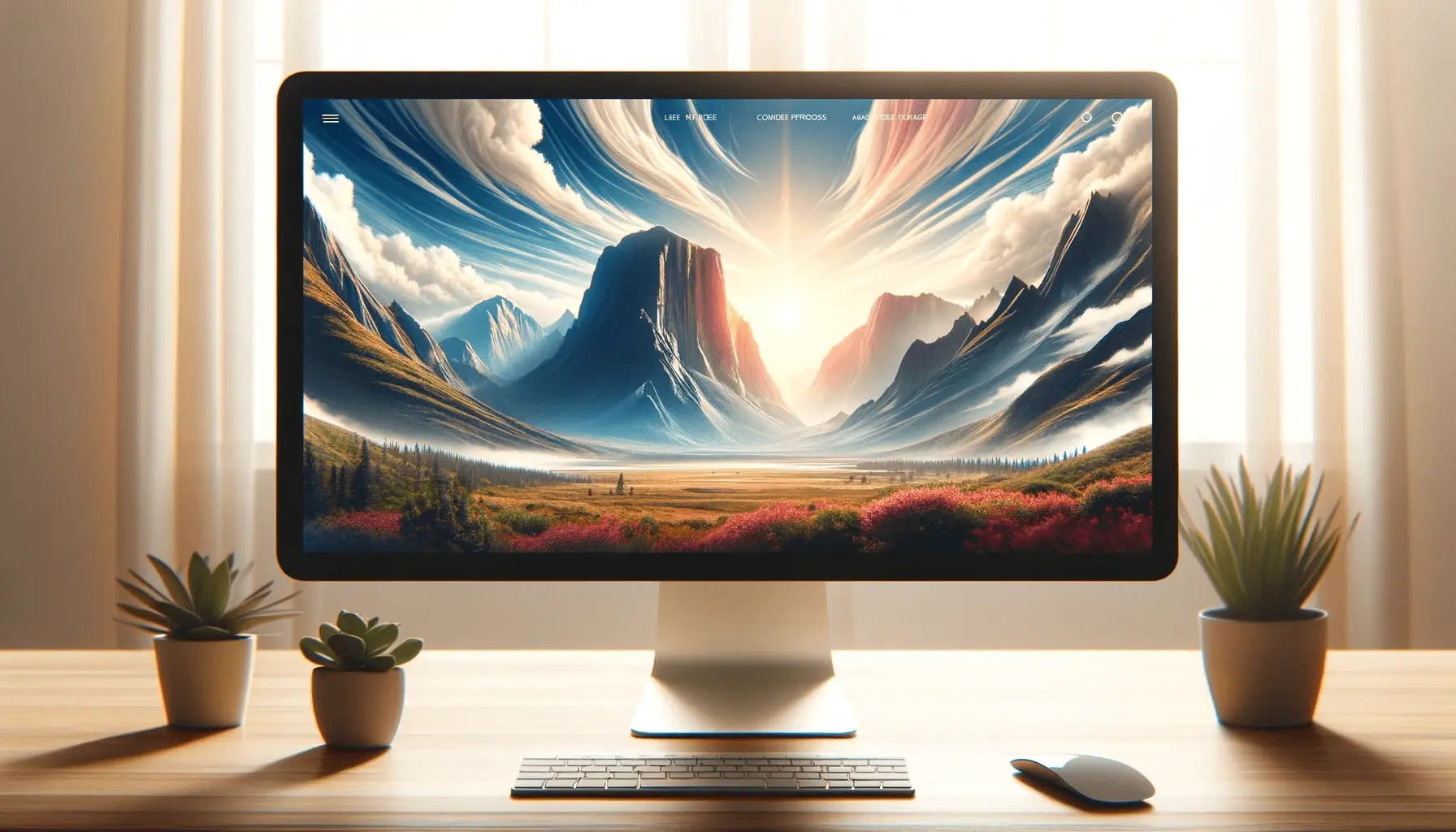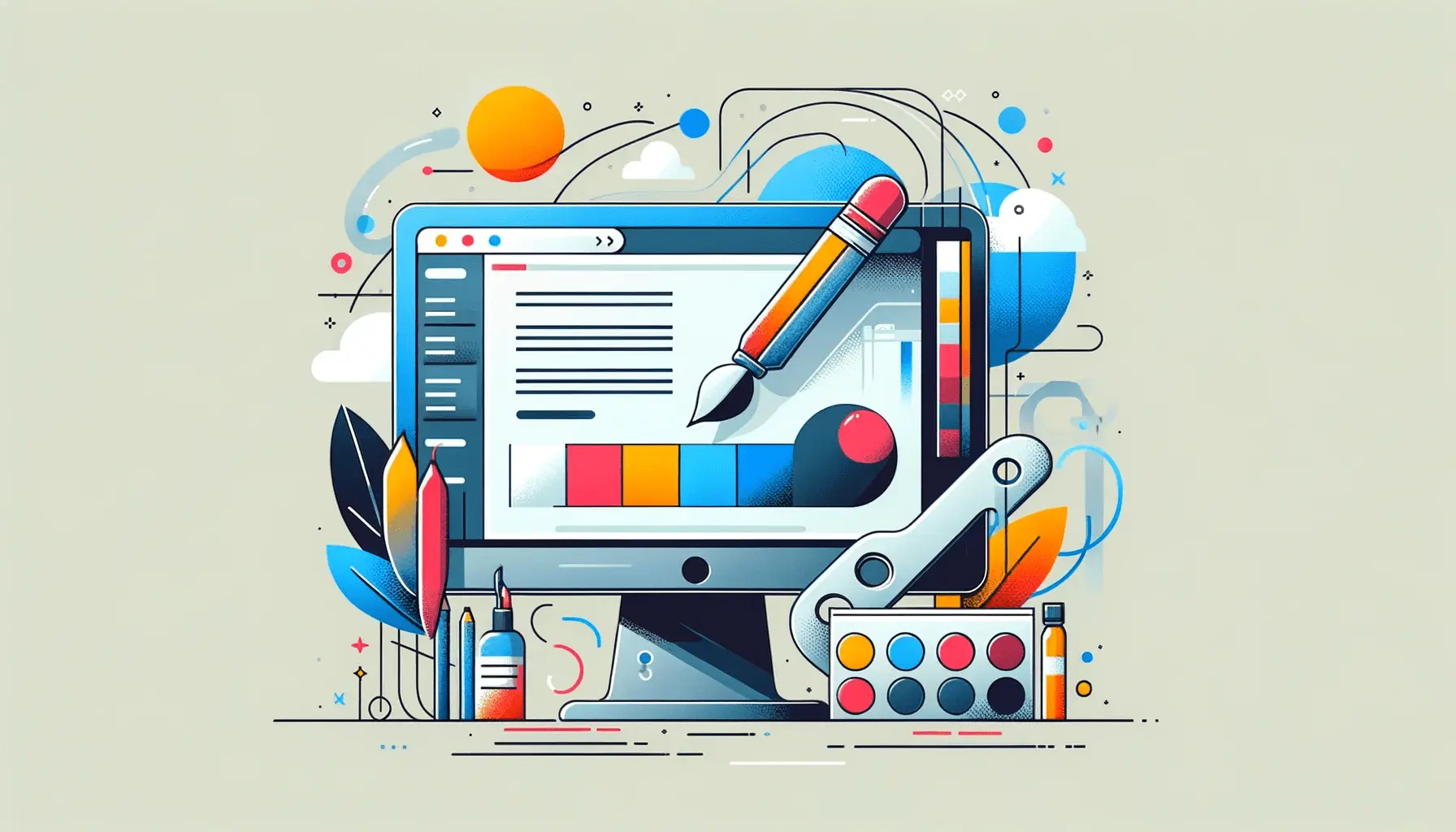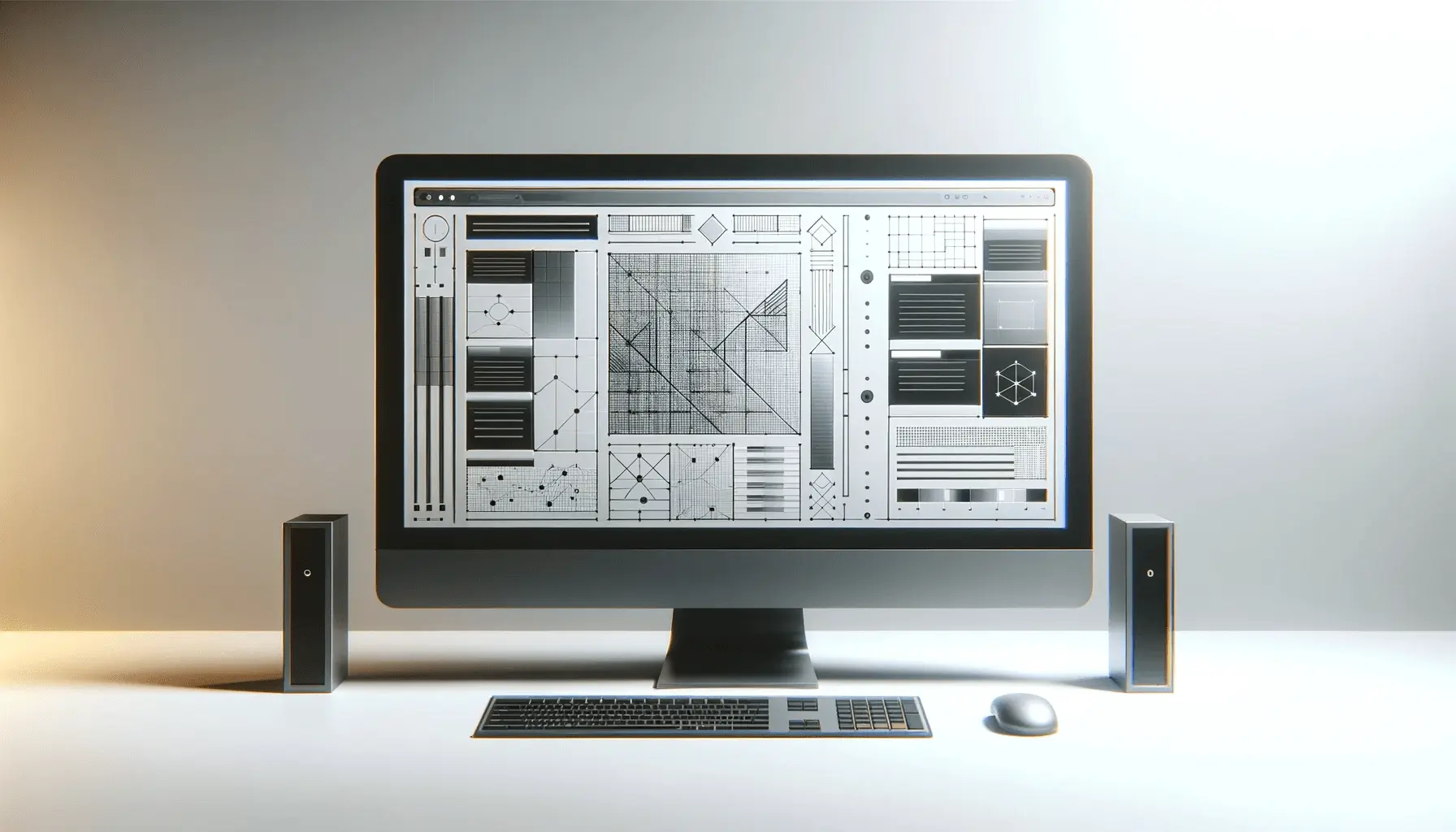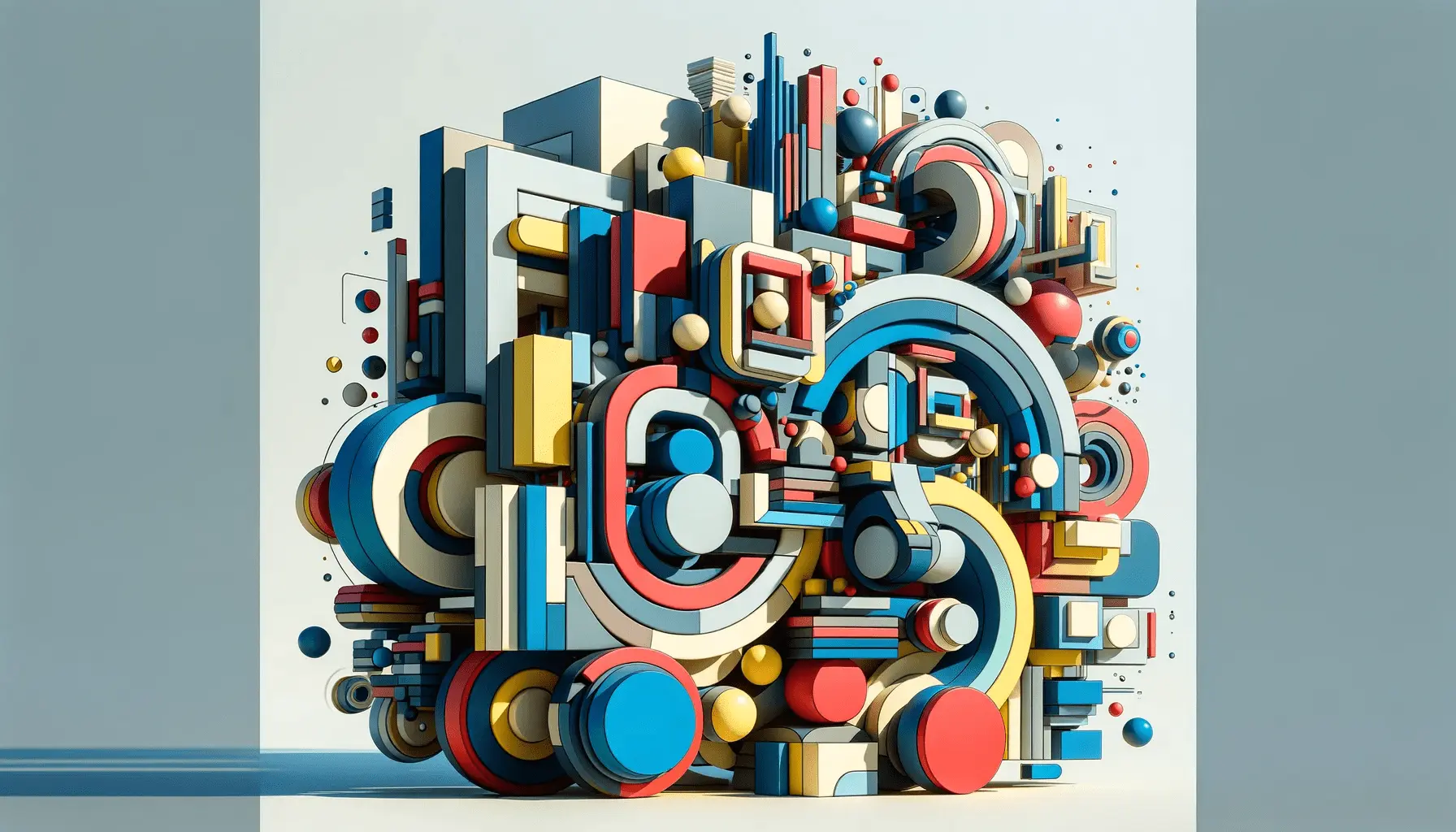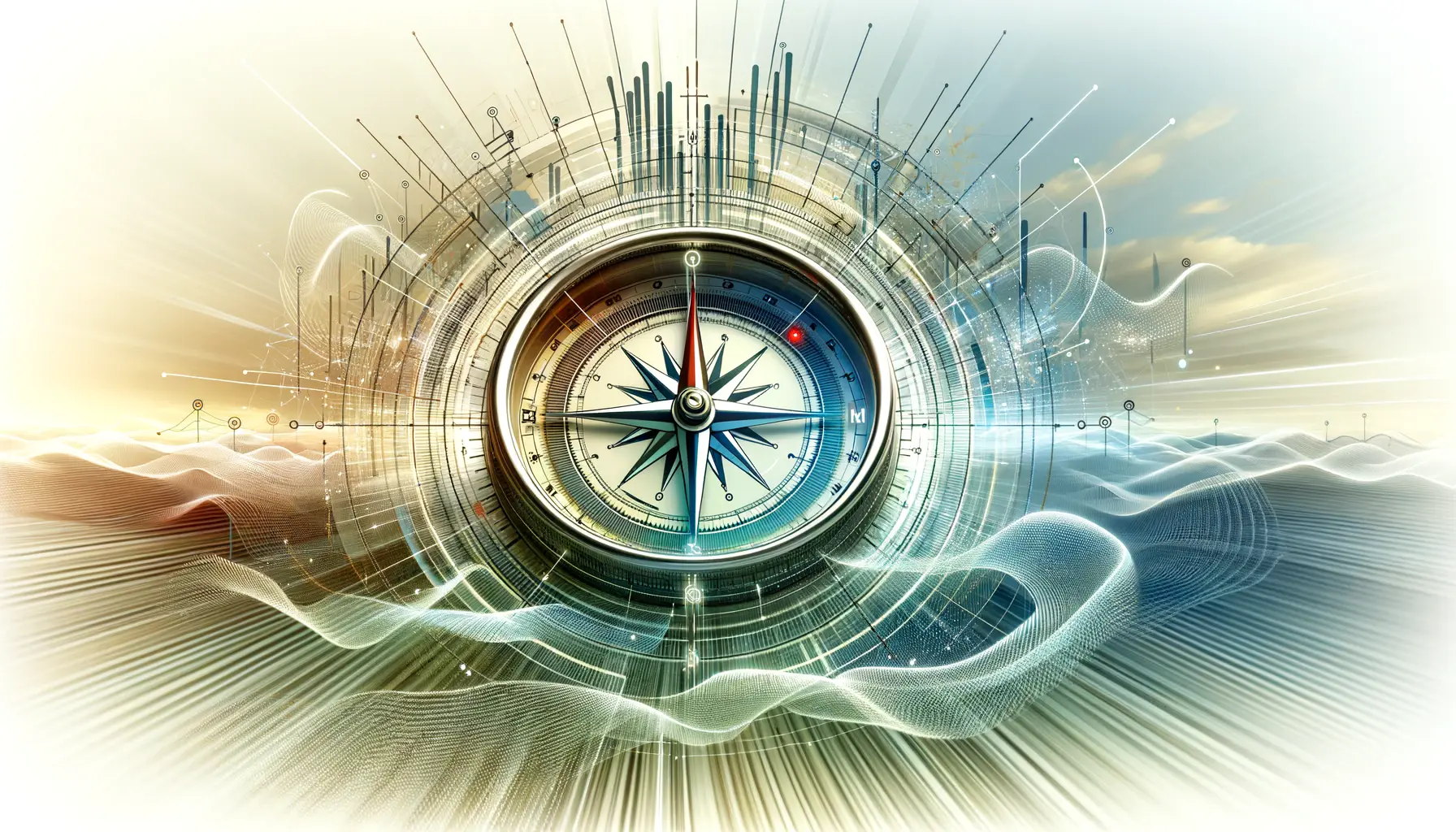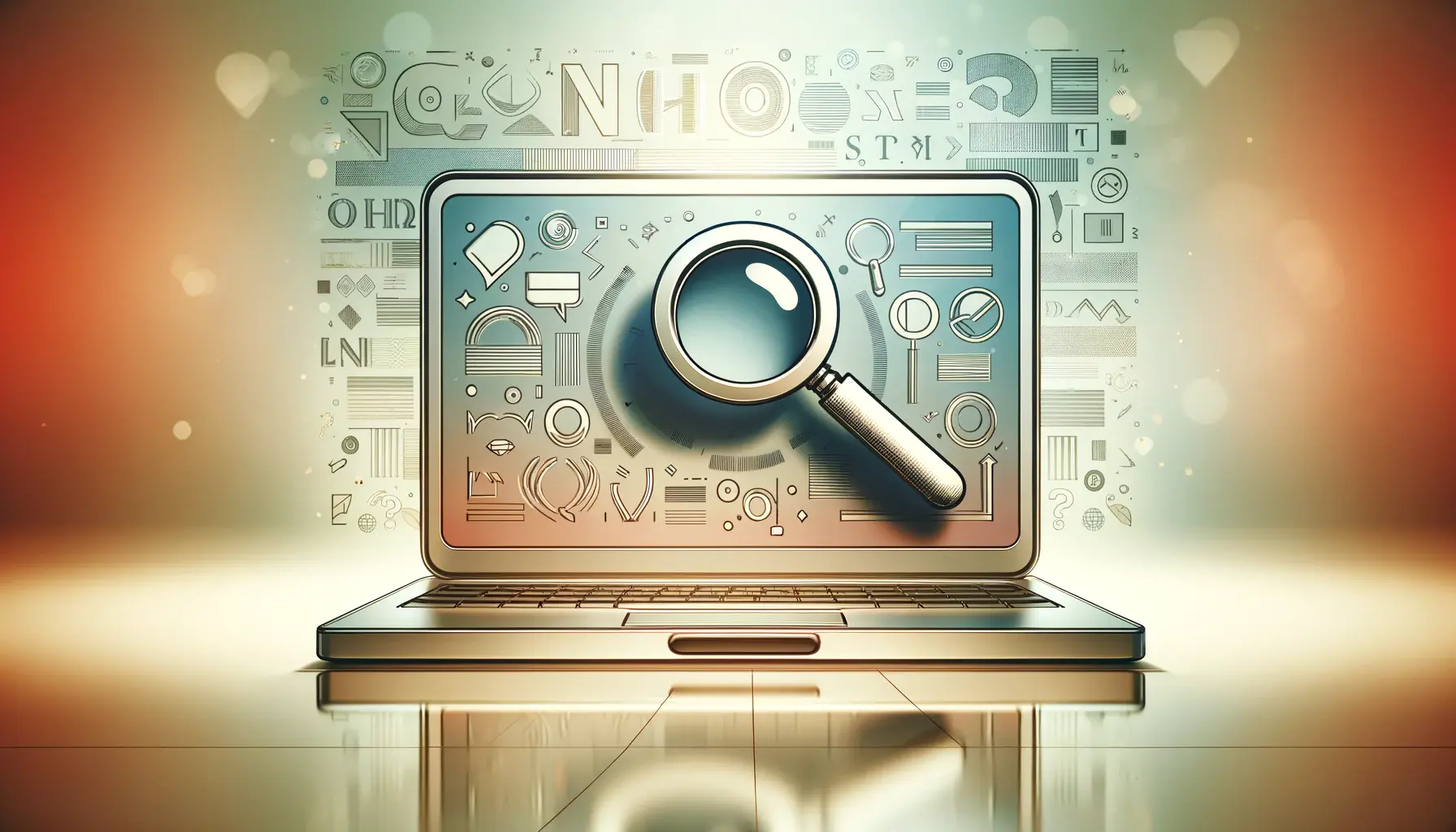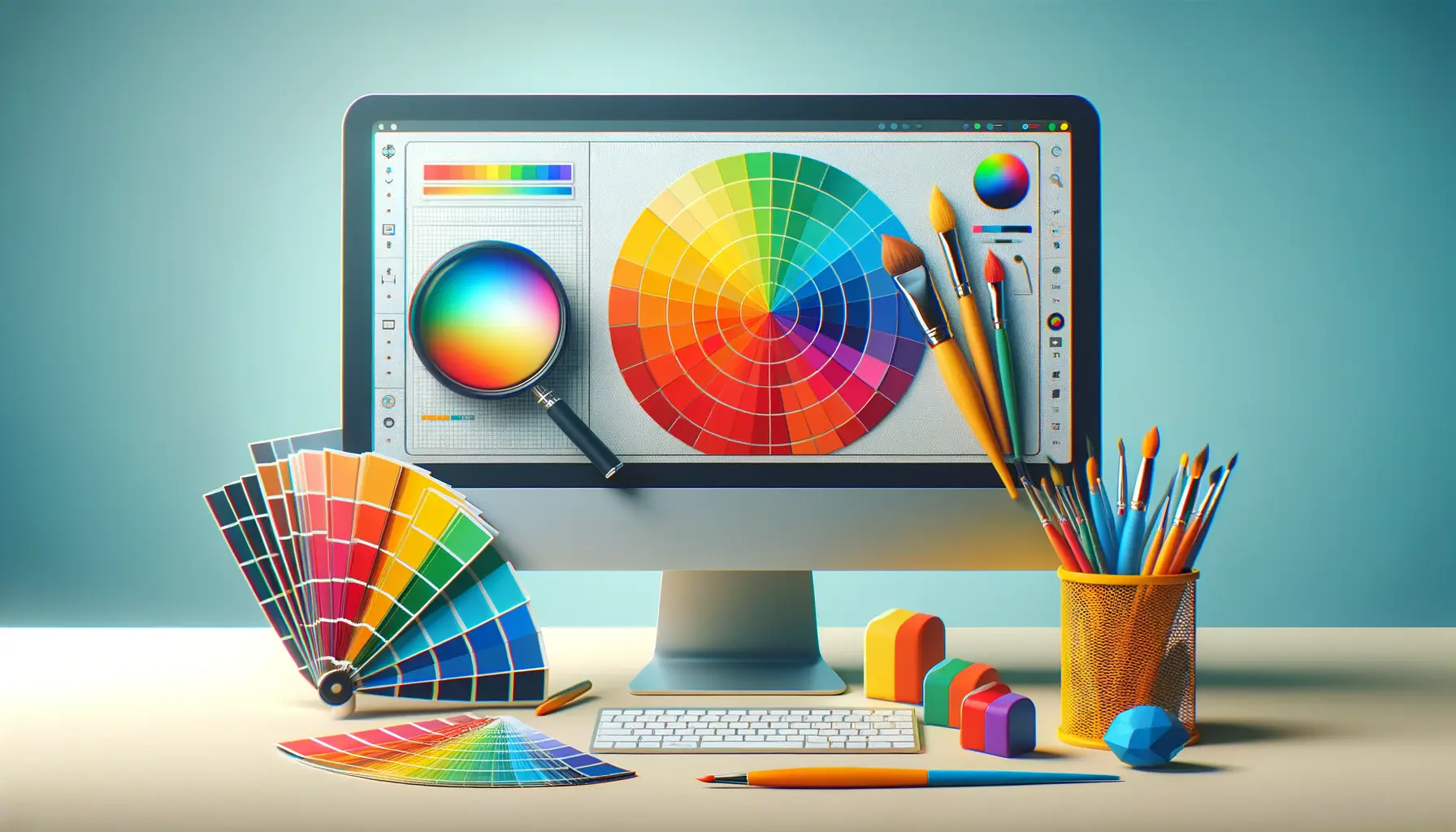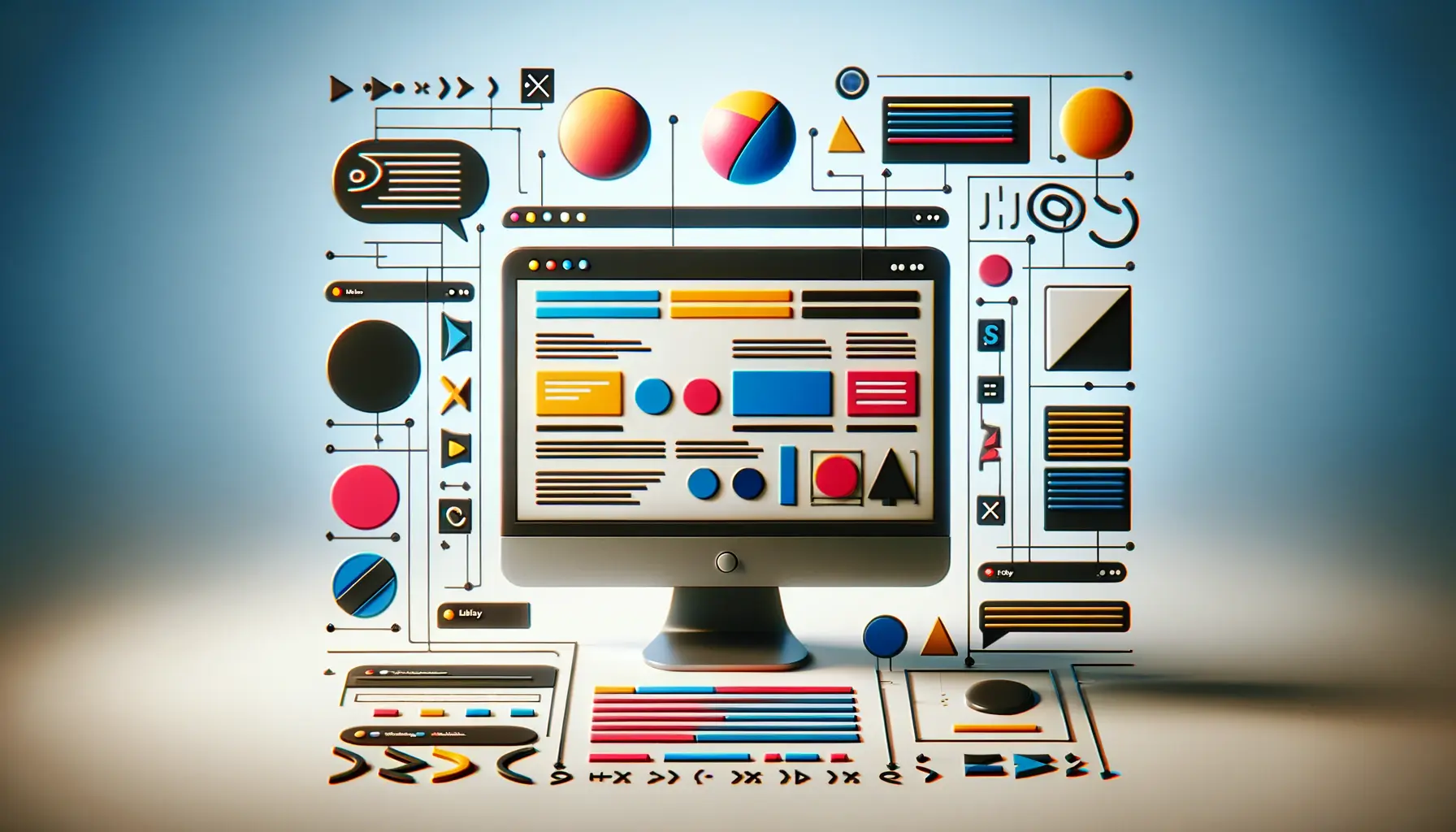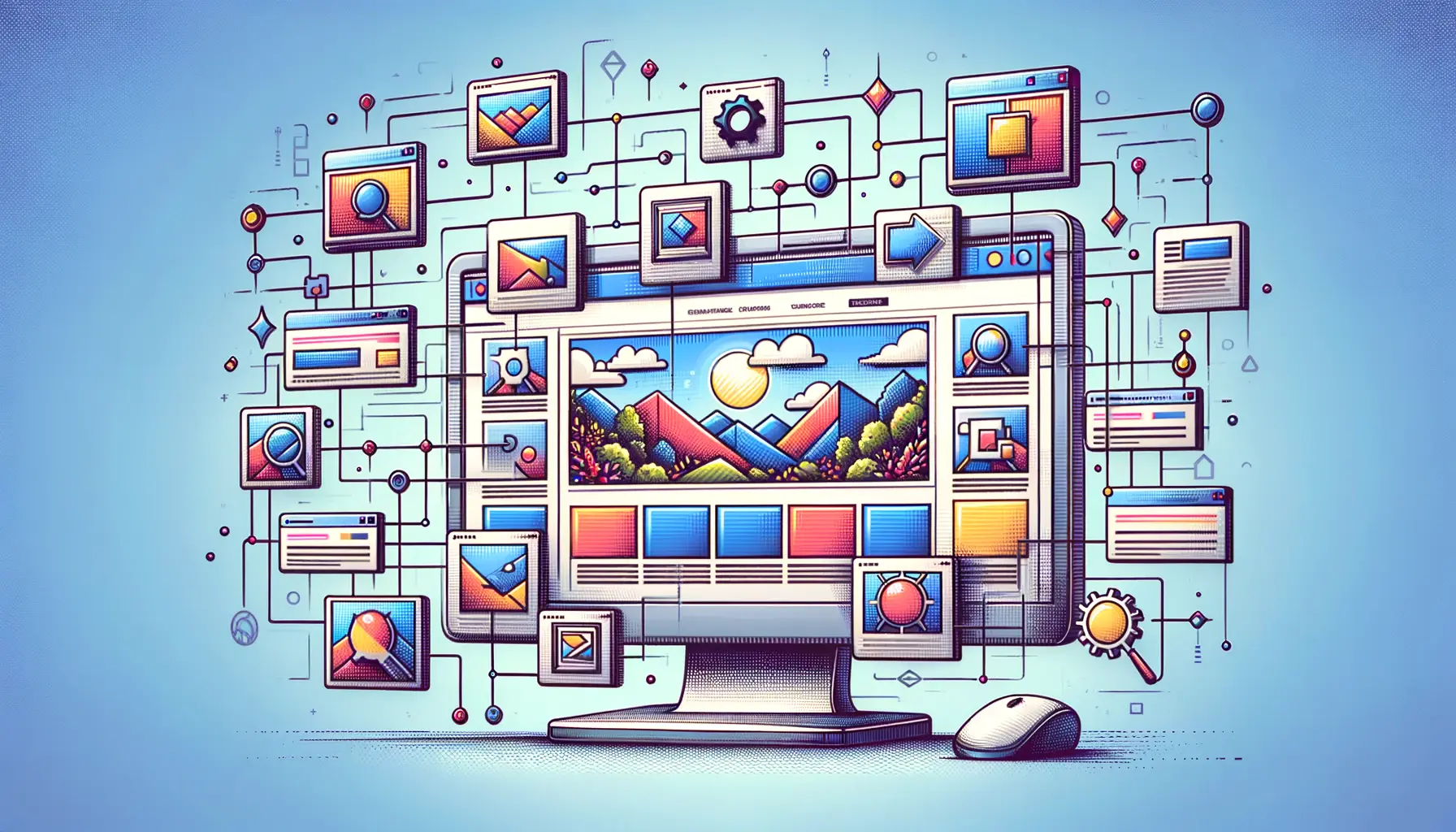When someone comes to your site, you have only a few seconds to make a lasting impression.
Which is why the application of large hero images has been such a prevalent trend in web design.
Those big, full-width images cover the top of a web page and immediately communicate your message, brand, and emotional tone.
But why are they so powerful?
In this article, we’re digging deep into the world of large hero images and why they’re such an important tool in today’s digital design world.
If you’re building a new website or redesigning an old one, understanding how to use large hero images can completely transform how users engage with your content.
- What Are Large Hero Images in Web Design?
- Why Large Hero Images Matter for First Impressions
- Best Practices for Using Large Hero Images
- Common Mistakes to Avoid with Large Hero Images
- Inspiring Examples of Large Hero Images in Action
- Mastering Large Hero Images
- Frequently Asked Questions About Large Hero Images
What Are Large Hero Images in Web Design?
Let us start by describing what we mean when we say large hero images.
They are large, high-definition images that show up immediately at the top of a site’s landing or home page.
They take up the full screen width and, therefore, command attention the instant one lands on the page while setting the visual tone for the entire site.
Unlike typical banners or sliders, large hero images are designed to strike a chord.
They often have minimal text, a prominent visual focus, and a clear call to action.
Think of them as the digital equivalent of a firm first handshake—firm, memorable, and full of character.
Definition and Purpose of Hero Images
A hero image is the primary visual element that invites users into the site.
It’s not merely a nice photo—it’s a tactical design element with actual purpose.
The objective is to rapidly communicate what your website is about and generate interest.
- They emphasize your brand message in a visually appealing manner.
- They build an emotional connection with your audience.
- They guide users to a target action, like clicking a button or scrolling down.
Large hero images, when utilized correctly, can significantly boost user engagement and drive time on your site.
How Hero Images Differ from Other Banners
All banners are not created equal.
Retro banners are small, information-dense, and often relegated to sidebars or scattered throughout the page.
Large hero images, on the other hand, take center stage.
They’re interactive and simple, with a sharp focus on storytelling.
- Hero images are larger and more visually dominant.
- They often make sliders or carousels unnecessary.
- They rely on strong images and not message-dense words.
These image-rich strategies keep the users engaged and interested, prompting them to stay and discover your website.
Evolution of Hero Images in Modern Web Design
Usage of large hero images has evolved significantly over the last few years.
With increased internet speeds and better screen resolutions, it is now feasible to utilize high-quality images without sacrificing performance.
This created opportunities for more creative, interactive designs.
- Video backgrounds are becoming a trend substitute for hero images.
- Parallax scrolling and animation add depth and interaction.
- Simple designs let the hero image speak for itself.
If you’re serious about modern web design, you can’t afford to ignore the power of large hero images.
They’re not just beautiful-looking—they’re tactical tools that assist in guiding your visitors, impacting your brand image, and driving conversions.
Large hero images aren’t just decorative—they serve a key functional role in capturing attention and setting the tone for the entire site experience.
Why Large Hero Images Matter for First Impressions
Remember the last time you visited a site that caught your attention within seconds of landing on it?
What caught your eye first?
Most likely, it was a compelling visual—a high-quality, bold image that took up the full width of the screen.
Such is the power of large hero images.
It creates an instant connection, setting the tone before a single word is read.
In today’s fast-paced digital world, first impressions are everything, and large hero images enable you to seize the moment.
By placing a powerful visual at the top of your homepage, you’re giving users something emotionally resonant and memorable.
This isn’t just an aesthetic issue—it’s strategy.
A great hero image dictates how users feel about your brand, what they expect from your site, and whether or not they choose to stick around.
Visual Storytelling and Brand Identity
Large hero images serve as powerful storytelling tools.
Instead of long paragraphs or flashy taglines, you’re telling your brand’s story visually.
Whether it’s a photo of your product, a behind-the-scenes moment, or a lifestyle image, the hero section is where your brand speaks without words.
- Images can evoke feelings of trust, excitement, or curiosity instantly.
- They provide a sense of what your business is all about at a glance.
- Recurring visual motifs in hero images reinforce your brand identity.
Done properly, they are a cornerstone of your design language that unifies all digital touchpoints.
Think of them as the visual handshake that introduces your brand to the world.
Emotional Impact on Website Visitors
Humans are visual creatures.
Studies have shown that humans process images 60,000 times faster than text.
That positions your large hero image to connect with visitors on an emotional level before they even begin to read your copy.
A high-energy shot of a happy customer, a dramatic product photo, or a serene landscape can lead a visitor to immediately feel something.
- Emotionally compelling imagery equals higher engagement levels.
- Humans remember more of what they see than what they read.
- First impressions that are emotional create deeper, longer-lasting connections.
Don’t aim for pretty.
Aim for connection.
Choose hero images that make your audience feel understood, inspired, or intrigued.
That emotional connection is typically what leads people to dig deeper and make eventual conversions.
Psychology Behind Image-Driven Design
Behind every successful use of large hero images is a layer of psychology.
We’re naturally drawn to faces, contrast, color, and composition.
Designers use these elements to subtly guide the visitor’s focus, mood, and behavior.
A strong image can direct the eyes to a CTA button, highlight a product, or even create a sense of urgency.
- Images with human faces can increase relatability and trust.
- High-contrast compositions naturally draw more attention.
- Color theory dictates mood—warm colors excite, cool colors relax.
Every decision in your hero image—from composition to color to subject—affects the impression of your site.
Understanding these psychological basics allows you to create a hero section that doesn’t just look good, but performs well.
If you want to create a memorable, high-converting website, large hero images must be at the top of your design priorities.
They’re not just a pretty face—they’re a first impression, a brand representative, and an emotional bridge between your business and your visitors.
Hero images help your brand speak emotionally before a single word is read, making them an essential tool for creating memorable first impressions in a digital space.
Best Practices for Using Large Hero Images
Getting the most out of large hero images isn’t a case of slapping on a nice picture and leaving it.
It requires planning, tactical placement, and technical optimization.
A well-implemented hero section can enhance user experience, improve engagement, and lift conversions—but only if it’s implemented correctly.
Let’s run through the best practices to get you the most out of your hero images.
Whether you’re working with a designer or building your site yourself, applying these best practices ensures that your large hero images don’t just look great, but actually work toward your goals.
Choosing the Right Image for Your Message
Every picture tells a story, and the one you choose needs to directly relate to your brand purpose and message.
Avoid generic stock images that seem cold or impersonal.
Go for images instead that resonate with your product, your audience, or your values.
- Use high-quality photos that reflect your brand personality.
- Select photos that use natural light and real human emotion where possible.
- Align your image style with your general design theme—clean, bold, minimal, etc.
Remember that the reason for using large hero images is not to simply decorate your site, but to create emotional connection and communicate value right away.
Optimizing Image Size for Performance
Large visuals can slow down your website if not properly optimized, leading to poor user experience and even search ranking penalties.
Today’s users expect pages to load in under 3 seconds—if your large hero image takes too long, you’re at risk of losing traffic.
- Compress images without sacrificing quality using tools like TinyPNG or Squoosh.
- Use modern image formats like WebP for faster loading times.
- Utilize responsive image and lazy loading techniques for different screen sizes.
Balance speed and image quality.
A fast website that is visually appealing captures visitors’ interest for a longer period.
Balancing Text and Imagery
An error that most commit is either filling the hero area with too much text or with too little.
You need to strike a balance.
Your image should guide the message, yet any supporting text needs to be easy to read and match the visitor’s intent.
- Utilize minimal text—a headline, subheading, and a strong CTA button.
- Use contrasting colors so that text stands out from the image.
- Test placement: Try left-aligned, center-aligned, or bottom text depending on composition.
The hero image and right text combination leads visitors directly to action without overwhelming them.
Using Call-to-Actions and Overlay Effects
Overlay effects like gradients or dark layers can be utilized to add text readability and visual impact.
Such additions not only make the content pop but also cause your large hero images to look more polished and contemporary.
- Add a semi-opaque overlay to create contrast for text.
- Utilize animated CTA buttons to gain attention without distracting.
- Try subtle parallax scrolling to energize the hero section.
Strategically placed CTAs guide users towards your business goals.
Don’t miss the chance to steer attention where it matters most.
Accessibility Considerations for Hero Sections
Designing with accessibility in mind ensures that everyone—even visually impaired individuals—can interact with your large hero images.
This not only expands your audience but also improves SEO and overall usability.
- Always include descriptive alt text on hero images.
- Ensure text over images meets WCAG contrast ratio standards.
- Ensure buttons and links in the hero area are keyboard accessible.
By keeping your hero section inclusive, you’re showing that your brand is considerate of all users—and that makes a lasting impression.
When you implement these best practices with your large hero images, you’re not merely improving appearances.
You’re building trust, increasing engagement, and laying the groundwork for meaningful user actions.
Strategic use of hero images—paired with optimized size, balanced text, and strong CTAs—can significantly improve site performance and visitor interaction.
Common Mistakes to Avoid with Large Hero Images
Large hero images can be an amazing asset when used well—but they can damage your website’s performance and user experience if misused.
Most website owners and designers make mistakes unwittingly that reduce the impact of their hero spaces or even frighten visitors away.
To get the most out of your design, it’s worth knowing what not to do.
Some of the most common errors to prevent while employing large hero images are enumerated below.
Low Image Resolution or Quality
A blurry or pixelated picture makes a poor first impression immediately.
Initial impressions matter, and low-quality pictures make your company look amateurish or outdated.
- Use web-optimized high-resolution images always.
- Check for distortion when pictures scale on different screen sizes.
- Do not over-compress images to the extent of visual degradation.
Large hero images must be clean, sharp, and strong.
Anything less than that can dilute your credibility.
Slow Loading Times and Performance Issues
Unoptimized gigantic images will make your site load very slowly.
Not only is this frustrating for users, but it also hurts your SEO ranking and bounce rate.
- Use compressed file types like WebP to load fast.
- Use lazy loading so images only load when they are needed.
- Ensure your hosting environment is optimized for speedy media delivery.
Page speed is essential.
If your large hero images are slowing your performance, it’s time to reconsider how they’re being utilized.
Lack of Mobile Responsiveness
What is beautiful on a desktop can turn into a mobile nightmare.
When your hero image resizes, tablet or phone users are treated to broken layouts, unreadable copy, or misplaced CTAs.
- Employ responsive design patterns to scale images to any screen size.
- Test hero sections across multiple devices and orientations.
- Ensure text is readable and CTAs are tappable on small screens.
Sizing large hero images for mobile ensures an uninterrupted, fluid experience for everyone.
Cluttered or Distracting Designs
Too much going on in your hero area can overwhelm the visitor.
Whether it’s too many words, several CTAs, or visual clutter, clutter takes away from your central message.
- Stick to a single focus: a headline, secondary text, and one CTA.
- Leave white space—don’t fill your hero image with too much.
- Employ a clean and simple design to keep the user’s focus.
Minimalism works best when accompanied by large hero images.
Let the image be the focal point without distraction.
Overlooking SEO and Alt Text Use
Too many designers forget that images are part of your SEO plan.
Search engines don’t “see” images, but they do read alt text and filenames to determine what your graphics are about.
- Add descriptive alt text that incorporates keywords.
- Use descriptive file names instead of vague ones like “image1.jpg.”
- Maintain the image content consistent with the page topic and user intent.
Optimizing your large hero images for SEO makes them viewable while also increasing visibility.
By avoiding these common mistakes, you’ll ensure your large hero images contribute to—not detract from—your website’s success.
A little attention to detail goes a long way in turning your hero section into a high-performing, visually stunning gateway to your brand.
Neglecting optimization or accessibility in hero images can hurt your UX, SEO, and brand trust—avoid these errors to make the most of your visuals.
Inspiring Examples of Large Hero Images in Action
If you’re looking for inspiration on how to use large hero images effectively, the best starting point is to look at how top-performing websites are doing it.
From bold e-commerce storefronts to minimalist agency portfolios, many brands are leveraging hero sections to create memorable first impressions, tell stories, and compel visitors toward action.
Let’s take a look at some compelling real-world examples and design trends that make hero images shine in today’s web design.
These instances demonstrate that an effective large hero image is not ornamental—it is strategic and efficient.
E-commerce Sites with Prominent Product Imagery
Large e-commerce players often use large hero images to showcase their flagship products in a minimalistic, dedicated way.
The goal is to immediately capture attention and nudge users toward shopping activities.
- Apple uses minimalistic, full-screen product images with subtle animations.
- Nike uses product and lifestyle shots together to create an active brand atmosphere.
- Warby Parker uses high-end lifestyle photos that reflect their audience and values.
These companies illustrate how the utilization of large hero images can influence purchasing decisions mere seconds after landing on the homepage.
Creative Agency Websites with Cinematic Headers
Design and marketing agencies use large hero images to promote creativity, culture, and portfolio pieces.
The sites often surpass expectations of traditional imagery, adding motion and depth to the experience.
- Active Theory and others use full-screen video backgrounds to convey innovation.
- Ueno’s former site combined personality-full images with quirky messaging.
- Locomotive emphasizes award-winning design with the contrast of stills and bold typography.
For creative teams, the hero image is a digital billboard for branding and personality.
Minimalist Hero Images on Portfolio Websites
Portfolios and personal websites are often well-served by clean, distraction-free hero areas that focus on one message or image.
Minimalist large hero images offer a calm and focused entrance for visitors.
- Photographers use full-screen photos to let their work speak.
- UX designers single out one prominent case study or testimonial with subtle visuals.
- Writers or consultants keep it minimal with background images and brief taglines.
This strategy is proof that less is more, particularly when attempting to bring individual expertise or a particular piece of work into the limelight.
Full-Screen Hero Videos for Immersive UX
Other brands take full-screen hero images to the next level by using full-screen videos.
Videos add motion, depth, and energy—making the user feel as if they’re in on the experience.
- Travel companies use drone footage to take visitors to dream locations.
- Fitness brands show high-action workouts that get the viewer energized right away.
- Restaurants and cafes use slow-motion food preparation shots to create emotion and appetite.
When paired with smooth transitions and bold CTAs, hero videos create unforgettable digital moments.
Design Trends Shaping Hero Image Aesthetics
Hero image design is still evolving.
Modern websites utilize advanced techniques to enhance aesthetics and usability simultaneously.
- Glassmorphism and blurred overlays create refined depth effects.
- Split-screen designs combine image and text for dynamic contrast.
- Typography-driven hero sections put messaging first with visual minimalism.
Staying on top of these design trends helps your large hero images be not just fresh and pertinent, but also engaging in a competitive online landscape.
Looking into how leading brands and creatives use large hero images provides inspiration for elevating your own site to the next level.
Regardless of whether you go cinematic, minimalist, or bold and colorful, the right hero image makes all the difference.
From e-commerce to portfolios, top brands prove that when used creatively, hero images can be the most powerful and versatile section of a website.
Mastering Large Hero Images
Why Large Hero Images Deserve Strategic Attention
Large hero images are no longer a design nicety—they’re the centerpiece of modern web design.
From the moment a visitor enters your site, the hero section lays out the blueprint for the rest of the user experience.
Your brand character, emotional tone, and value proposition are conveyed immediately through it.
Whether you’re running an e-commerce site, building a personal portfolio, or promoting a brand, making the most out of large hero images is critical in terms of drawing attention and spurring interaction.
What We’ve Learned about Best Practices
In the entire article, we’ve examined how large hero images can be employed to transform the performance of a site if done effectively.
From the image quality, the responsiveness, and emotive storytelling, each element helps tap the power of the hero section.
- High-quality, contextually relevant images create trust and professionalism.
- Optimized image types enhance page load time and performance.
- Balanced text and imagery create clarity and inspire user action.
- Accessibility features extend your audience and enhance usability.
- CTAs and overlays increase engagement and conversions.
Using these strategies guarantees your hero image isn’t merely viewed—it’s experienced.
This emotional connection is what continues to keep visitors engaged and returning.
Steering Clear of Common Pitfalls Pays Dividends
No less important is learning what to steer clear of.
Slow loads, poorly made visuals, bad mobile responsiveness, and cluttered designs can all serve to lose your visitors in an instant.
Your majestic large hero image never should be a barrier—it should be an opening.
- Balance image quality and speed at all times.
- Check your hero section on different devices to ensure responsiveness.
- Use short, simple language to support your image without distraction.
By doing this, you give each user a smoother, more engaging experience.
Take Inspiration and Make It Your Own
The examples that we’ve mentioned—be it e-commerce giants or design companies—show that large hero images can be applied to fit any brand or goal.
It’s only a matter of the way they’re applied purposefully and organically.
Get inspired by what works but make your hero section mean something to your unique message and audience.
Stay up to date with design trends like glassmorphismA design trend featuring frosted-glass-like effects with transparency and blur for a modern, layered look., type-based designs, and interactive video to keep your site looking new and modern.
Your hero image needs to adapt with your brand—it represents the public image of your digital face.
Final Thoughts: Convert First Impressions into Lasting Connections
You can’t make a second first impression in digital design.
Large hero images give you the power to make the moment last.
By combining insightful design, technical precision, and emotional storytelling, you can leverage your hero section as a conversion tool, an engagement tool, and a brand tool.
So, as you build or refine your site, make your large hero image more than a design choice—make it a strategy.
It’s your opportunity to engage, inspire, and encourage visitors to move forward with confidence.
Mastering hero images means combining aesthetic appeal with strategic execution—making them work not just visually, but functionally for your goals.
Quality web design is key for a great website! Check out our service page to partner with an expert web design agency.
Frequently Asked Questions About Large Hero Images
Some of the most common questions people have about using large hero images in web design are listed below.
These answers will provide you with a better understanding of how to use them and how to avoid any pitfalls.
A hero image is a high-quality, full-width image placed at the top of a webpage.
It’s utilized to make powerful first impressions, communicate branding, and invite users to interact with the site content.
Hero images immediately capture the user’s attention, set the emotional tone, and communicate a brand’s most important message.
They help enhance user experience and increase engagement right from the moment one arrives at your website.
To make a hero image mobile-friendly, use responsive design techniques.
Resize the image optimally, test designs on different devices, and ensure that text remains legible and call-to-action buttons are easily tappable.
Yes, large hero images can slow down your site if they aren’t optimized.
Compress your images, use efficient file formats like WebP, and enable lazy loadingA performance optimization technique where images are only loaded when they are about to appear in the user’s viewport. for fast load times without compromising visual experience.
Hero images need to include visuals that reflect your brand personality, products, or audience.
High-quality visuals with emotional appeal or contextual relevance perform best and enable users to connect immediately with your message.
Hero images can include text, but it has to be concise and simple to read.
A straightforward headline, subheading, and call-to-action work well paired with the image without overwhelming the design or user experience.
Yes, many websites use full-screen hero videos to increase engagement.
Ensure the video is lightweight, muted by default, and on-brand to keep the experience immersive without distracting the user.
Refresh your hero image with every new campaign, season, product, or design update.
Having an updated hero section continues to create visual interest and keeps your site aligned with your current branding efforts.
Stock images might do the trick when selected carefully, but steer clear of very generic imagery.
Custom or branded hero images are preferable for their authenticity, uniqueness, and deeper resonance with your target audience.
